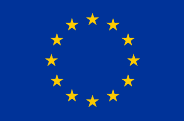
Safe non-food consumer Products in the EU and China
A skin lightening cream is a cosmetic used to lighten skin tone or treat hyperpigmentation. A cosmetic product is any substance or mixture intended to be placed in contact with the external parts of the human body (epidermis, hair system, nails, lips and external genital organs) or with the teeth and the mucous membranes of the oral cavity with a view exclusively or mainly to cleaning them, perfuming them, changing their appearance, protecting them, keeping them in good condition or correcting body odours. (Regulation No.1223/2009)
The most common risks identified in this product sector are set out below.
1. Chemical risks
2. Hygiene risks:
This is a list of examples of common risks. However, the manufacturer has to carry out an assessment of the skin lightening cream that covers all relevant risks that may be associated with the product and actions taken to mitigate these risks where possible. A general definition of risk and its relationship to hazards can be found in the factsheet on Risk management.
Specific examples of measures taken against dangerous skin lightening creams offered for sale in the European Union are available on the Safety Gate website. Type ‘skin lightening cream’ into the free text search box (but without the quotation marks) and select the ‘cosmetic’ Product Category to view notified examples. A better understanding of mistakes made in the safety assessment of the skin lightening cream or its manufacture can help avoid their repetition.
The applicable legislation for cosmetic products is the Cosmetic Products Regulation 1223/2009. This lays down the requirements that all cosmetics must meet before they can be marketed in the EU. Regardless of the manufacturing processes or the channels of distribution, cosmetic products placed on the EU market must be safe. The manufacturer is responsible for the safety of their products and must ensure that they undergo an expert scientific safety assessment before they are sold. A special database with information on cosmetic substances and ingredients, called CosIng, enables easy access to data on these substances, including legal requirements and restrictions.
The use of certain substances is prohibited in cosmetics (Annex II to Regulation No 1223/2009) and others can be used only under certain conditions (Annex III to Regulation No 1223/2009).
Although there is no single guidance document outlining the regulatory requirements, further information on the Cosmetic Products Regulation can be found here. In addition to this, scientific and technical guidance is available here. Further information on certain cosmetic ingredients and their permitted concentrations is provided at the Cosmetic Ingredients database.
The EU level cosmetics legislation requires also that all products that are marketed in the EU must be registered in the cosmetic products notification portal (CPNP) before being placed on the market and that some cosmetic products are given special attention from regulators due to their scientific complexity or higher potential risk to consumer health.
More specific details can be found here.
Although there are no harmonised standards for cosmetic product composition, there is a standard which can be used to assist in developing systems for good manufacturing practice. This is not a European Standard and is commonly used in cosmetic product manufacturing all over the world and has been approved by the European Committee for Standardisation (CEN). Many certification bodies offer certification to this standard for manufacturing processes:
ISO 22716: 2007
This standard provides guidance for good manufacturing practice of cosmetic products.
Note: The full text of European standards can only be purchased from a national standardisation body. The following site of CEN (the European standardisation organisation) provides links to the national standardisations bodies’ websites. In addition, the China Standards Information Services Network can be used to access European standards.
In addition to this, the Council of Europe has published ‘Guidelines on Good Manufacturing Practice of Cosmetic Products (GMPC) and this can be purchased from here.
While manufacturer’s need to familiarise themselves with all the laws which apply to their specific products, the following summarises some further key applicable laws:
The following are obligatory:
If claims are made these need to be substantiated (proof of the effect claimed). According to Article 20 of Regulation No 1223/2009, in the labelling, making available on the market and advertising of cosmetic products, text, names, trademarks, pictures and figurative or other signs shall not be used to imply that these products have characteristics or functions which they do not have.
Warnings and instructions for use need to draw the attention of users and supervisors to the inherent hazards and associated risks and how to avoid injury. They must be adequate and non-misleading.
All cosmetic products must be accompanied by their Product Information File (PIF). This will include:
Notification to the Cosmetic Products Notification Portal (CPNP) is mandatory before placing on the market
Ownership of the PIF remains with the responsible person (RP) established within the EU. This person shall ensure that the product they are responsible for complies with the obligations set out in EU Cosmetics Regulation.
Please refer to respective sections of the SPEAC FINDER regarding:
You may also visit the SPEAC ACADEMY to learn more about the EU Safety requirements.
The provided information was updated in 2022. Please note that some of the provided information could change during possible subsequent revisions of legislation, standards, and guidance documents. For any updates of official information on the EU product safety rules, please follow the Link to the webpage of the European Commission.
This document was produced with the financial support of the European Union. Its contents are the sole responsibility of SPEAC project and do not necessarily reflect the views of the European Union.

This website was created and maintained with the financial support of the European Union. Its contents are the sole responsibility of SPEAC project and do not necessarily reflect the views of the European Union.